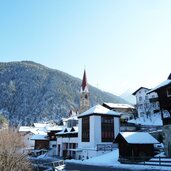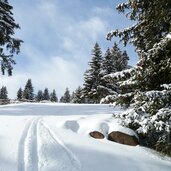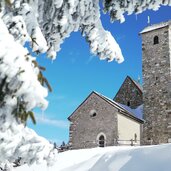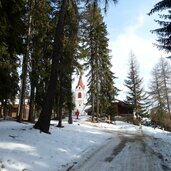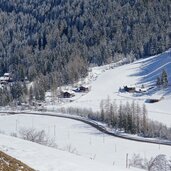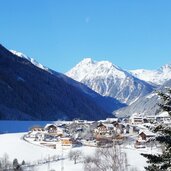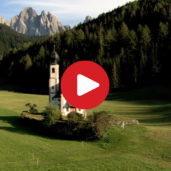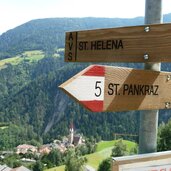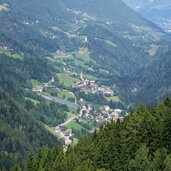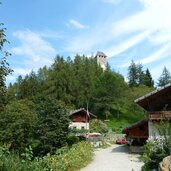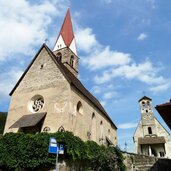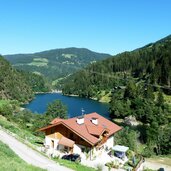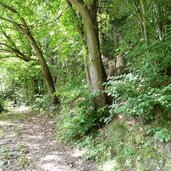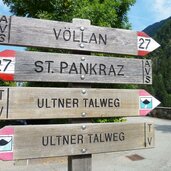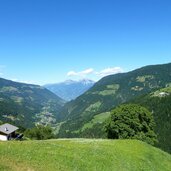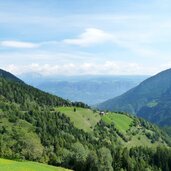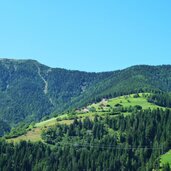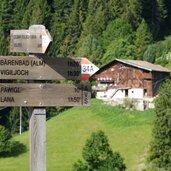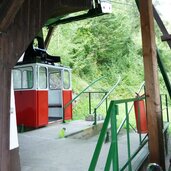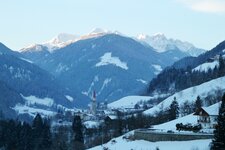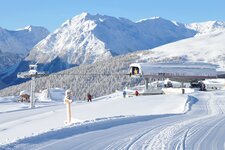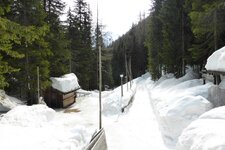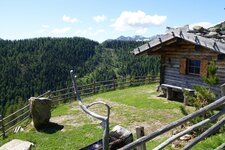San Pancrazio is home to several noteworthy buildings, including Eschenlohe Castle, the St. Helena Church, and the “Häusl am Stein”
Image gallery: San Pancrazio
From Lana, the road branches off into the Val d'Ultimo and winds its way up the slope to San Pancrazio, the first village in the valley. The municipality includes the hamlets located between the district of Gegend, the main village, and Lake San Pancrazio, or Alborelo, one of six reservoirs in the valley.
Farmsteads are scattered on the wooded slopes to the left and right of the road. Josef Egger, one of Tyrol's most important historians, was born in San Pancrazio. The small, cobbled village centre is flanked by two churches.
The village's history dates back many centuries, telling stories of lords of the manor, priests, spa resorts and sanctuaries. A testament to this long past is Eschenlohe Castle, which is perched above the village. It was mentioned as early as 800 years ago as Ultimo Castle. Behind the main village lies the hamlet of Bagni di Mezzo.
Today, it is just a few old houses set among meadows, but it was once one of the most visited spas in the German-speaking world. Illustrious guests such as the painter Franz von Deferegger, the writer Thomas Mann, and members of the European high nobility frequented the resort. On the various hikes that start in San Pancrazio, you will also pass old buildings and farms. These include the Ultimo Farm Trail, a day hike to Santa Valburga, and the beautifully situated Church of St. Helena. The ascent to this panoramic spot is an ideal summer tour, followed by a picnic.
Surrounded by the winter silence of the Val d'Ultimo, these paths are also accessible in the cold season. You will find more opportunities to be active - cross-country skiing, downhill skiing at the Schwemmalm Ski Area, ice skating and tobogganing - in Santa Valburga and Pracupola.


